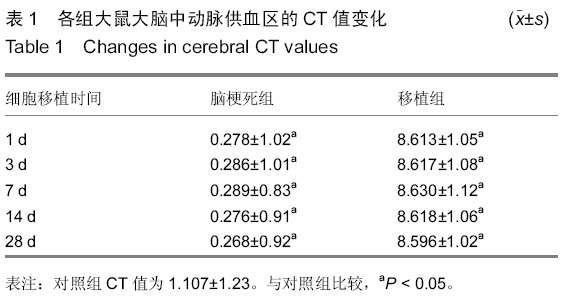|
[1] 米玉俊. CT对腔隙性脑梗塞的诊断价值[J].医学信息:上旬刊, 2011,24(7):4209-4210.
[2] 杨康,孙国庆.刍议CT 成像技术的发展和应用问题[J].现代养生B,2015,7:290.
[3] Kim JY, Ryu JH, Schellingerhout D, et al. Direct Imaging of Cerebral Thromboemboli Using Computed Tomography and Fibrin-targeted Gold Nanoparticles. Theranostics. 2015;5(10): 1098-1114.
[4] Kwon MR, Lee HY, Cho JH,et al. Lung Infarction due to Pulmonary Vein Stenosis after Ablation Therapy for Atrial Fibrillation Misdiagnosed as Organizing Pneumonia: Sequential Changes on CT in Two Cases. Korean J Radiol. 2015;16(4):942-946.
[5] 尹峰,朱静,綦书抑,等.CT 灌注成像对大鼠脑梗死半暗带的时间依赖性[J].放射学实践,2011,26(7):701-704.
[6] Momose H, Sorimachi T, Aoki R, et al. Cerebral Infarction following Acute Subdural Hematoma in Infants and Young Children: Predictors and Significance of FLAIR Vessel Hyperintensity. Neurol Med Chir (Tokyo). 2015;55(6):510-518.
[7] 肖红,裴松霞,赵玲玲,等.CT、MRI影像学检查对皮质下动脉硬化性脑病的临床应用[J].医药论坛杂志,2011,32(14):157-158.
[8] 夏志燕.老年多发性脑梗死患者MRI与CT结果的对比研究[J].中外医学研究,2012,10(26):98.
[9] Lamot U, Ribaric I, Popovic KS. Artery of Percheron infarction: review of literature with a case report. Radiol Oncol. 2015; 49(2):141-146.
[10] 牛冬菊.脑出血患者应用低场强MRI的诊断分析[J].医药论坛杂志, 2010,31(23):82-83.
[11] 马春,于聪,赵建农,等.CT 灌注成像对脑梗死缺血半暗带的动态观察[J].中国医学计算机成像杂志,2008,14(3):195-199.
[12] 季鹏,袁晓毅,王全帮,等.磁共振弥散加权成像在急性脑梗死诊断中的价值[J].安徽医药,2012,16(2):204-206.
[13] 张宏卫.MRI与CT在腔隙性脑梗塞的诊断对照研究[J].当代医学, 2012,18(21):55.
[14] Truong QA, Thai WE, Wai B, et al. Myocardial scar imaging by standard single-energy and dual-energy late enhancement CT: Comparison with pathology and electroanatomic map in an experimental chronic infarct porcine model. J Cardiovasc Comput Tomogr. 2015;9(4):313-320.
[15] 刘创宏,徐斌,宋冬雷.CT灌注成像在缺血性脑血管病中的临床应用[J].国际脑血管病杂志,2009, 17(8): 604-608.
[16] 于志刚.探讨CT、MRI诊断腔隙性脑梗死的价值[J].大家健康:下旬版,2014,8(2):84.
[17] Pasupathy S, Air T, Dreyer RP, et al. Systematic review of patients presenting with suspected myocardial infarction and nonobstructive coronary arteries. Circulation. 2015;131(10): 861-870.
[18] 胡春梅,郭思思,王锋,等.CT灌注成像在超早期脑梗死中的应用[J].国际脑血管病杂志, 2010,18(5): 327-330.
[19] Kim MH, Woo SK, Lee KC, et al. Longitudinal monitoring adipose-derived stem cell survival by PET imaging hexadecyl-4-¹²?I-iodobenzoate in rat myocardial infarction model. Biochem Biophys Res Commun. 2015;456(1):13-19.
[20] 刘振华,杜怡峰,吕京光,等.脑梗死患者脑血流动力学的多层螺旋CT灌注成像研究[J].中华老年医学杂志,2011,30(6):452-454.
[21] Liu BY,Cai GX,Chen XM.Buyang Huanwu Decoction regulates the neural stem cell behavior in ischemic brain. Neural Regen Res. 2013;8 (25): 2336-2342.
[22] 陈风兰,赵勤智.低场强磁共振超急性期脑出血的影像诊断[J].吉林医学,2010,31(8):1071-1072.
[23] Choe J, Goo HW. Extralobar pulmonary sequestration with hemorrhagic infarction in a child: preoperative imaging diagnosis and pathological correlation Korean J Radiol. 2015; 16(3):662-667.
[24] Lapa C, Reiter T, Li X, et al. Imaging of myocardial inflammation with somatostatin receptor based PET/CT - A comparison to cardiac MRI. Int J Cardiol. 2015;194:44-49.
[25] 张祯铭,杨海山.老年多发性脑梗死患者MRI 与CT检查结果的对比[J].中国老年学杂志,2011,31(20):4047-4048.
[26] Bai RY,Gan GW,Xing Y,et al.Two outward potassium current types are expressed during the neural differentiation of neural stem cells.Neural Regen Res. 2013;8(28): 2656-2665.
[27] 刘晖.多模式CT检查在急性脑梗死中的应用[J].国际脑血管病杂志,2011,19(9):687-693.
[28] 周仲辉,臧达,杨敏洁,等.CT 仿真内窥镜成像技术的临床应用[J].当代医学,2013,19(12):5.
[29] Wang L,Jiang F,Li QF,et al.Mild hypothermia combined with neural stem cell transplantation for hypoxic-ischemic encephalopathy: neuroprotective effects of combined therapy. Neural Regen Res. 2014;9 (19): 1745-1752
[30] Nieman K, Krestin GP. Science to practice: Collateral damage from percutaneous coronary intervention revealed: can CT match MR imaging. Radiology. 2015;274(2):309-310.
[31] Girard EE, Al-Ahmad A, Rosenberg J, et al. Contrast-Enhanced C-arm Computed Tomography Imaging of Myocardial Infarction in the Interventional Suite. Invest Radiol. 2015;50(6):384-391.
[32] Ahmetgjekaj I, Kabashi-Muçaj S, Lascu LC, et al. Magnetic resonance imaging criteria for thrombolysis in hyperacute cerebral infarction. Curr Health Sci J. 2014;40(2):111-115.
[33] 王展航,邹志才,阳文浩.神经干细胞联合间充质干细胞治疗脑梗死的临床疗效观察[J].血栓与止血学,2012,18(2):61-62,65.
[34] 王清涛,韩慧敏.以低场磁共振为首诊急性基底节区脑出血13例影像分析[J].西南军医,2011,13(2):214-216.
[35] Serrano-Vicente J, Duran-Barquero C, Garcia-Bernardo L, et al. Bilateral alien hand syndrome in cerebrovascular disease: CT, MR, CT angiography, and 99mTc-HMPAO-SPECT findings. Clin Nucl Med. 2015;40(3):e211-e214.杜飞,郭艳霞.MRI与CT在老年多发性脑梗死病人诊断中的临床结果比较[J].中国老年学杂志,2012,32(3):487-489. |











